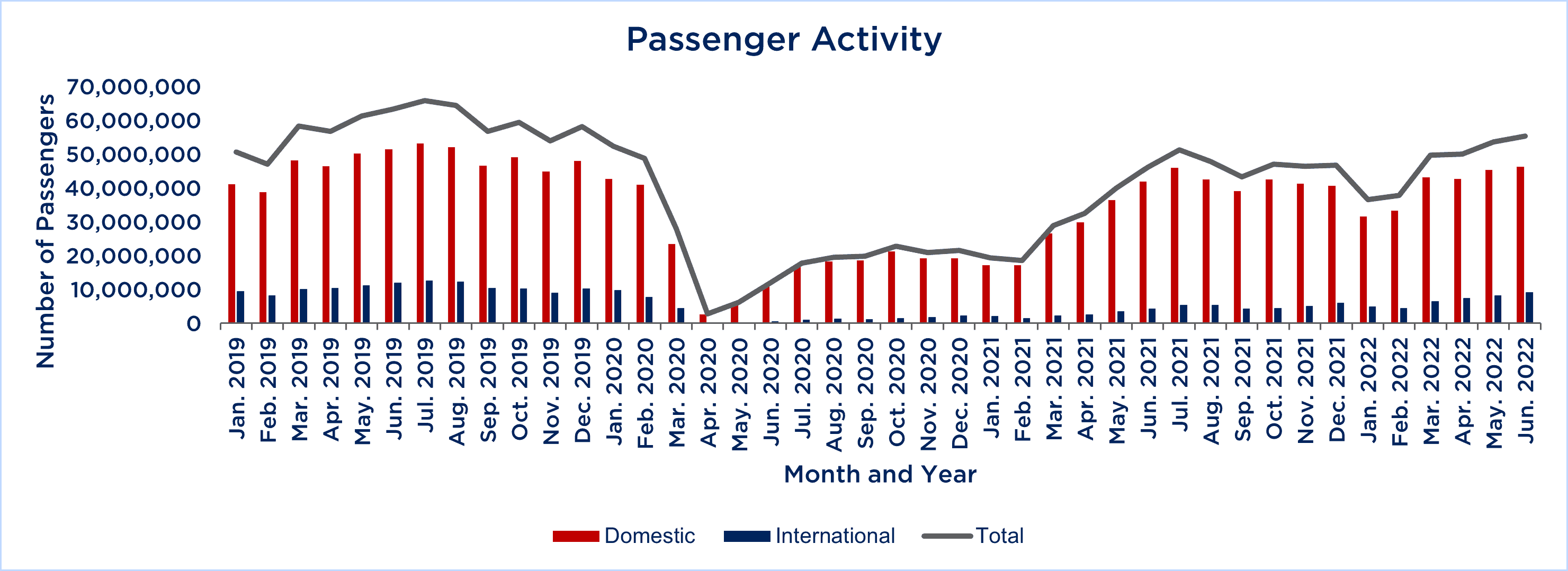Offering clients the level of certainty they need to make critical, real-time decisions to ensure the commercial success of their aviation projects.
Our Aviation outlook document lets industry leaders and clients know what factors to keep an eye on, whether that be labor and materials, the state of the market, or industry trends. We also keep you informed on aviation construction cost drivers and what information like this means for the future of the sector.
Things to watch out for
Labor & Materials
Construction unemployment rate is at 3.5% meaning contractors will likely struggle to find enough workers as demand for construction outpaces the availability of the workforce. In one of the most challenging work environments, aviation construction demands skilled labor, and finding the right team can be vital to project success. With today’s labor shortages – at all levels – finding that team requires an understanding of your local market to identify the right timing for your project and to thoroughly vet your contractor and subcontractor pools.
Lead times continue to be a moving target, particularly for those trades that are driving airport schedules and costs (major mechanical and electrical equipment, curtain wall, roofing) – and thought needs to be given to alternative procurement approaches such as bulk-buying, early-release packages, and pre-purchasing.
State of the market
The latest Architectural Billings Index of 53.2 represents a decline for the third straight month after a burst of growth in early 2022. A score above 50 still indicates moderately strong conditions overall, with the Northeast being the only region reporting under 50. The ABC Construction Backlog Indicator showed a slight decline in July, and whilst lower than its peak in May of 2022, it remains higher than at any point from March 2020 to March 2022. Despite these positive indicators, there is waning confidence in the industry amid fears of a recession and rising borrowing costs, which may lead to a slowing of construction activity generally. This could mean further improvement in supply chain bottlenecks and an easing of commodity prices and materials escalation. While we expect inflation rates to soften going into 2023, we anticipate a slow process. For now, demand for aviation construction remains strong as we also observe the rollout of the IIJA and we continue to see projects compete for resources.
Trending
ESG, Automation, Flexibility, Futureproofing, and Passenger Experience. These key principles are shaping the way we currently think about airport design and construction. Often, they are competing for the spotlight as we see conflicting interests in terms of need, want, cost, schedule, and return on investment. Stakeholder management is key: those who may not want to pay for it, advocates who may not be able to afford it, and public perception – among others. Strategies need to be priced and analyzed in detail to provide a full lifecycle picture to inform educated decision making. The roll-out of the IIJA continues to make headlines, however give thought to the impact inflation may have on its value if it continues at its current pace.
About the chart
This chart represents passenger traffic for 10 of North America’s leading airports, from 2019 to present.

What this means for the aviation sector
With a dramatic downturn in passenger traffic in early-to-mid 2020, the industry has observed a steady return of activity close to pre-pandemic figures. With a strong return in passenger count and a renewed focus on ESG, Automation, Futureproofing, and Passenger Experience, interest continues in aviation-related construction at all levels; from smaller refurbishments and infrastructure repairs to large-scale expansions. While great for both the aviation and construction industries, this demand creates challenges in terms of competition for resources. Thoroughly understanding those challenges and identifying potential solutions will go a long way to ensuring your project takes-off and lands smoothly.
FURTHER INFORMATION:



